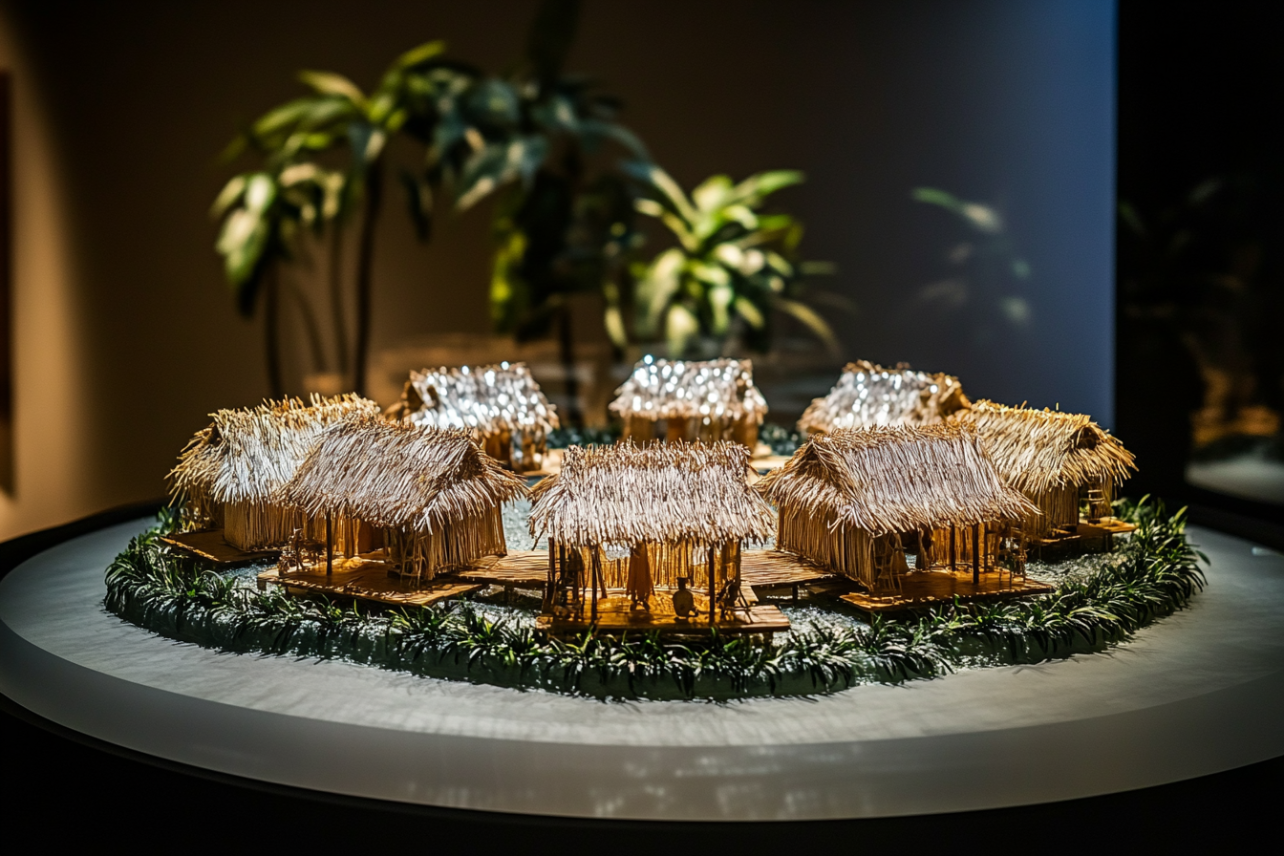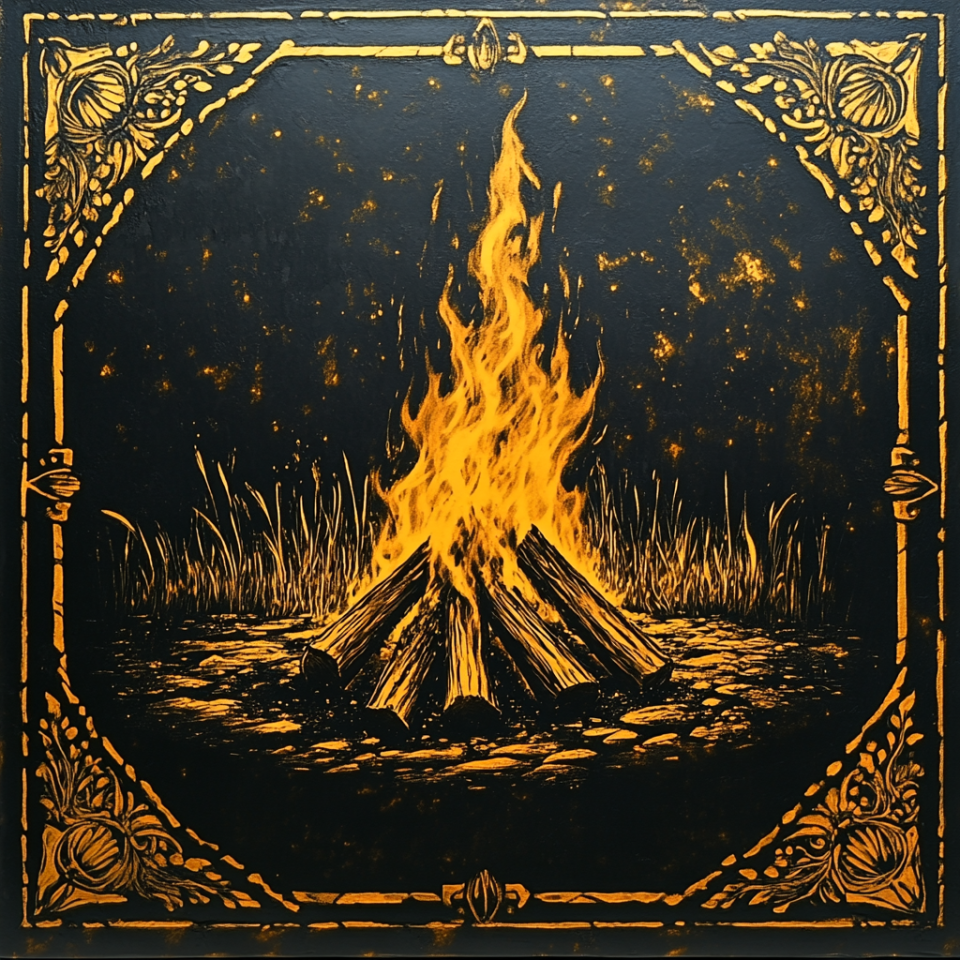Trypillia (trih-PEEL-yah)
First Builders Community
They do not arrive with fire or flood, but with pattern—curved lines drawn in ochre, spirals pressed into clay, footsteps placed in concentric circles. The Trypillia people do not shout. They settle, like breath inside stone walls, like memory carried in woven cloth. Their presence in Tír na nÓg is soft but deliberate, a kind of quiet unfolding that reshapes the land from beneath.
To live as they did is to walk in rhythm with the seasons and to treat the hearth as altar. Every vessel is a song. Every home, a womb. Their villages spread outward like galaxies, their designs echoing the motion of stars, seed spirals, and the human touch. They did not ask the world to obey them—they listened, and shaped themselves accordingly.
In the Realm, the Trypillians are not a people lost to time. They are those who knew how to stay—how to grow in place, to build without violence, to treat clay as kin and fire as teacher. They are not often seen, but when they appear, they bring with them a sense that the world is still waiting to be arranged more beautifully.
Geography & Historical Context
The Trypillia culture flourished from approximately 5500 to 2750 BCE, spanning the territories of modern Ukraine, Moldova, and northeastern Romania. They are known in archaeology as the Cucuteni-Trypillia culture, reflecting both Romanian and Ukrainian excavation sites. As a Neolithic-to-Chalcolithic society, they represent one of the most sophisticated prehistoric cultures of Old Europe—predating Indo-European migrations and long before the rise of Mediterranean empires. Trypillian settlements were often vast and circular, with some villages containing hundreds of homes organized in concentric rings. These communities prioritized communal life, extended matrilineal families, and ritualized domesticity. Homes were frequently burned intentionally in spiritual cycles of renewal—a practice that archaeologists believe marked symbolic death and rebirth of the space. They did not develop writing, bronze weaponry, or rigid hierarchy. Their power lay in balance, in seasonal observance, and in the unspoken philosophy that careful repetition builds meaning. Their decline came gradually—whether through climate, migration, or cultural absorption remains debated. But in Tír na nÓg, they are seen not as vanished, but as rooted elsewhere, preserved in the geometry of space and the sacred logic of the circle.Culture & Identity
Trypillia society was egalitarian and matrilineal, centered on the household as the axis of spiritual, social, and economic life. Women served as ritual leaders, potters, seed-keepers, and lineage anchors, while men tended fields, herds, and maintained communal paths. Leadership was likely fluid—guided by age, skill, and ritual knowledge. There were no palaces, temples, or kings—only clusters of rounded homes, each with its own painted walls, clay altars, and hearths. Fertility was not a theme but a foundational worldview: echoed in goddess figurines with spiral wombs, in vessels shaped like torsos, and in the seasonally aligned cycles of planting, fire, and home-building. Their ethic was not conquest, but attunement. Harmony with soil, sky, and kin was upheld through symmetry and rhythm. Gender was expressive but balanced—reflected in art, labor, and ritual roles. The Trypillians did not imagine power as domination but as the ability to arrange life well.Communication & Expression
Trypillia language remains unknown—no writing system has survived—but their visual lexicon speaks with extraordinary clarity. Their ceramics were more than utilitarian—they were codified beauty. Coils, chevrons, spirals, and eye motifs were applied in black and red on pale clay, forming recursive maps of breath, growth, and return. Their figurines—often stylized female forms—were not idols of worship but conceptual vessels, representing earth, fertility, and the inner self. Many were headless or limbless, perhaps to signify archetype over individual. Others sat in thrones, arms extended in offering or dance. These were not decorations—they were ritual presences. Communication also occurred in space: the circular layout of homes, the alignment of entrances, the echo of paths between houses. Everything reflected a belief that life should unfold in mirrored, measured turns, like the seasons, like the potter’s wheel, like time made visible.Economy & Lifeways
The Trypillians practiced mixed agriculture, cultivating wheat, barley, flax, and legumes in rotation. They domesticated cattle, sheep, and goats, often maintaining small, sustainably integrated herds. Hunting and foraging complemented this—especially in early phases—and riverine environments provided fish, reeds, and clay. Craft was sacred: ceramic production was prolific, with each vessel individually coiled, painted, and often ritually interred. Kilns were communal, and ceramic knowledge passed matrilineally. They also wove fine flax cloth, tanned hides, and built walls of wattle-and-daub, coated in painted plaster. Tools were made from bone, flint, and polished stone—rarely weapons, mostly sickles, spindle whorls, and hoes. Labor was distributed along seasonal lines, often cooperative. There is no evidence of slavery or wealth disparity. Their economy was subsistence-rich, ritual-bound, and memory-guided.Legacy & Contribution
The Trypillia people contributed a philosophy that form shapes feeling—that beauty, balance, and ritual domesticity are not luxuries, but foundations of the good life. Their commitment to peaceful permanence—to cultivating presence without conquest—left a powerful template for later Aetherkin and Realm cultures focused on caretaking rather than expansion. Their visual motifs influenced neighboring cultures and likely carried through to Indo-European ritual forms in subtle ways. More profoundly, their ethics of circular space, sacred home-building, and generational fire cycles informed how certain Tír na nÓg societies structure villages, festivals, and life-passage ceremonies. Their absence from conquest narratives is not a silence—it is a statement, a legacy of choosing resonance over dominance. And in Tír na nÓg, they are honored wherever the circle holds and the center remembers.Trypillia Aetherkin
Trypillia Aetherkin mostly in Idathach. Their dwellings are warm, womb-shaped, and aligned to solstice light. Every entrance faces the center; every hearth remembers its predecessors. They serve as clay-keepers, birth midwives, pattern-weavers, and ritual renovators. Some teach other cultures how to build with breath, not blueprint. Others guard sacred fire mounds, tending cyclic burning rituals that mark death, memory, and spiritual rebirth. Many appear in dreams as gentle guides who walk in circles until you finally understand the path. They wear linen dyed with mineral reds and blacks, carry beads made from river-stone, and speak rarely but precisely. Among the Aetherkin, the Trypillians are the shape-rememberers—those who do not tell others how to live, but show how to shape a life worth returning to.Communities
Most Trypillia Aetherkin reside at:Some Trypillia Gods
See Also: Deities
Trypillian Aetherkin
See Also: Aetherkin
Cultural Era:~6000 BCE – ~2500 BCE
Parent ethnicities
Related Locations





















